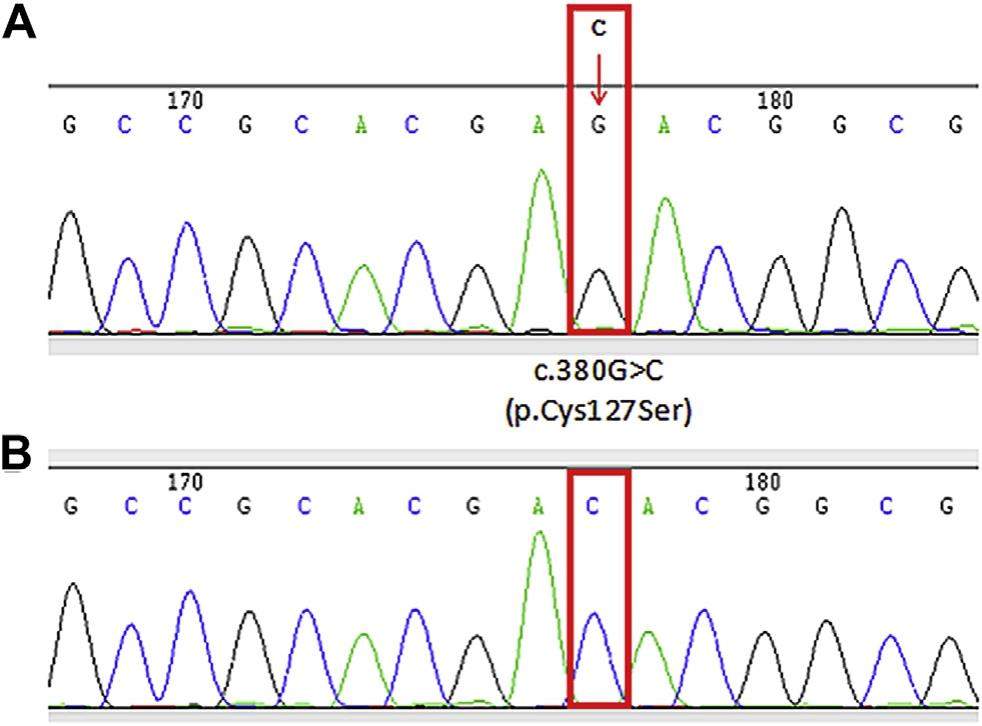
An EGLN1 mutation may regulate hypoxic response in cyanotic congenital heart disease through the PHD2/HIF-1A pathway


Cyanotic congenital heart disease (CCHD), a term describing the most severe congenital heart diseases are characterized by the anatomic malformation of a right to left shunt. Although the incidence of CCHD are far less than the that of congenital heart diseases (CHD), patients with CCHD always present severe clinical features such as hypoxia, dyspnea, and heart failure. Chronic hypoxia induces hypoxemia that significantly contributes to poor prognosis in CCHD. Current studies have demonstrated that the prolyl-4-hydroxylase2 (PHD2, encoded by EGLN1)/hypoxia-inducible factor-1A (HIF-1A) pathway is a key regulator of hypoxic response. Thus, we aim to assess the associations of single polymorphisms (SNPs) of the EGLN1 gene and hypoxic response in CCHD. A missense variant of EGLN1 c.380G>C (rs1209790) was found in 46 patients (46/126), with lower hypoxia incidence and higher rate of collateral vessel formation, compared with the wild type (P<0.05).In vitro experiments, during hypoxia, EGLN1 mutation reduced EGLN1 expression compared with the wild type, with higher HIF-1A, VEGF and EPO expression levels in the mutant. No difference in HK1 expression was observed between the mutant and wild type. CCHD patients with c.380G>C showed improved response to hypoxia compared with the wild-type counterparts. The EGLN1 c.380G>C mutation improves hypoxic response through the PHD2/HIF-1A pathway, which may provide a molecular mechanism for hypoxic response in CCHD. The effects of the EGLN1 c.380G>C mutation on CCHD prognosis deserve further investigation.
